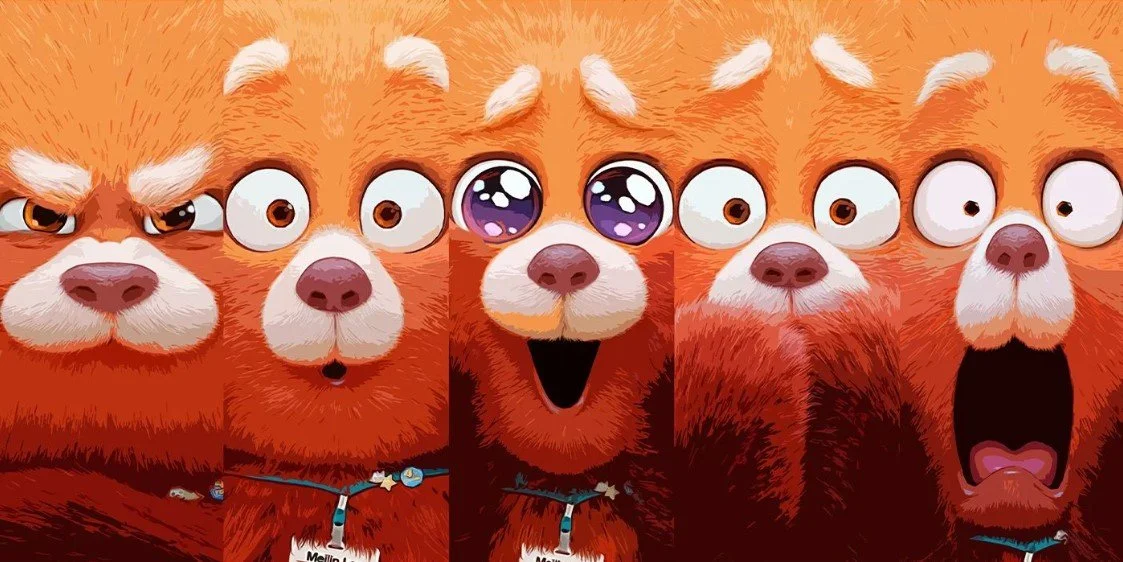How Turning Red Uses and Exceeds Stereotypes
Meilin is the protagonist of Disney and Pixar’s Turning Red who can transform into a larger-than-life red panda at the fortune (or misfortune) of her familial heritage. (Image Source: Collider)
Growing up, I rarely saw Asian representation in animation. For me, Mulan and Kung Fu Panda were the extent of Asian portrayal. It is no surprise that I am desperate to grasp onto any representation Asians get, and Turning Red was no exception.
On March 11th, 2022, Pixar released the highly-anticipated animated feature, Turning Red (directed by Domee Shi), on Disney+. With 16 million views on the teaser trailer alone, the official trailer racked up 44 million views, nearly two times as many views as Pixar’s previous releases of Luca and Soul.
Additionally, the film spotlighted Mei’s favorite boy band, 4*Town, which took inspiration from early 2000s bands like NSYNC, as the movie takes place in 2002, Toronto. The group sang an original, early 2000s style pop song written by Billie Eilish and Finneas O’Connell, who also helped produce three other songs on Turning Red’s soundtrack. “Nobody Like U” gained significant recognition, with 102 million views on YouTube and 47 million streams on Spotify.
Turning Red also spoke to many teenagers, especially Asian teenagers, and particularly, me. Being an Asian-American teen and a fan of animation, I had been anticipating Turning Red’s release since the teaser had been released.
However, there is a problem in defining the line between exceeding stereotypes, reinforcing stereotypes, or simply erasure of culture (for example, white-washing). However, ethnicity and race should not be the defining characteristic of a character.
In this case, Turning Red can be excluded from the third option, with many references to Chinese culture: Chinatown, food, language, homes—all this was subtly portrayed in a way to not scream at the viewer that Mei is Chinese, but reinforce that it is a part of her identity. Jin Lee, Meilin’s father, got a cooking scene of delectable Chinese dishes, while Mei and her mother, Ming, watched Chinese dramas in the living room.
Something else that surprised me while watching the opening scenes of the film was hearing Cantonese being spoken in the background as Mei runs through her neighborhood to complete her duty of honoring her ancestors at the Lees’ temple. Oftentimes, with Chinese characters in American films, Mandarin is the additional language spoken—this was the first time I had heard Cantonese. Hearing a familiar tongue was a pleasant surprise, and not only did it happen once, but it occurred throughout the film.
The two main Asian stereotypes I recognized in the movie were Mei as the “studious smart Asian kid” and Ming as a tiger mom.
Mei is portrayed as a top-student and hardworking an A+ student, though it is debatable whether this part of her life is placed onto her because of her East Asian race. A big part of the reason why Mei strives for good scores is to gain approval from her mother; “honor your parents” is one of the first lines in the film. But she also seems to genuinely enjoy her academics; it isn’t questioned when she tells her friend that she’s excited about math. And in no way are these aspects mentioned to be related to her race.
Then comes the question of Ming as a “tiger mom.” Strict and overprotective are attributes that can fall under this term. What Turning Red doesn’t necessarily do, however, is defend or villainize Ming. At times, Ming acts as an inconvenience to Mei, but she also knows when to step in to help her daughter make the right choices—Mei is only 13 years old.
And by the end of the movie, she grows as a character, recognizing and apologizing that she sometimes crosses the line in controlling Mei’s life. Some poorly-rated reviews by parents believed the film encouraged lying and deceit, but in reality, it also shows the effect of overprotective parents—there is a message for more than just a younger audience.
One critique I have of the film is the allegory of turning into a red panda representing the chaotic changes during puberty. Although this metaphor is not explicitly stated, Turning Red does not shy away from mentioning topics from deodorant to periods. (In fact, many parents disapproved of how direct they addressed these realistic changes in a teenager’s life.)
But where things can get iffy is the ambiguity in this metaphor. “It’s just some, you know, inconvenient, uh, genetic thingy I got from my mom,” Mei explains to her friends when discovering her panda form. I questioned relating this transformation and “blaming” it on her family history—does it being a “genetic thingy” imply that this is solely a Chinese problem? And why does (spoiler alert) her family decide to return to their original form, while Mei chooses to keep the panda? What the red panda represents becomes unclear.
Although the message of the movie does simply (and stereotypically) include embracing one’s identity, it is clearly specifies the changes during teenage years. The metaphor of a red panda debatably and messily tries to tackle too many parts of one’s personal makeup.

